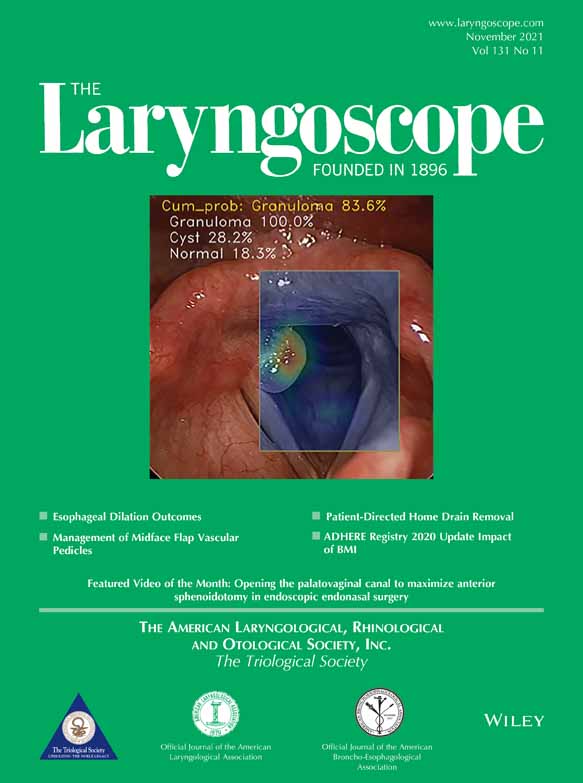COVID-19 Cross-Infection Rate After Surgical Procedures: Incidence and Outcome
Editor's Note: This Manuscript was accepted for publication on May 20, 2021.
The authors have no funding, financial relationships, or conflicts of interest to disclose.
Abstract
Objectives/Hypothesis
Severe acute respiratory syndrome coronavirus 2 (SARSCoV-2) is transmitted by droplet as well as airborne infection. Surgical patients are vulnerable to the infection during their hospital admission. Some surgical procedures are classified as aerosol generating (AGP).
Study Design
Retrospective observational study of four specialties associates with known AGP's during the 4 months of the first wave of UK COVID-19 epidermic to identify post-surgical cross-infection with SARSCoV-2 within 14 days of a procedure.
Methods
Retrospective observational study in a tertiary healthcare center of four specialties associates with known AGP's during the 4 months of the first wave of UK COVID-19 epidermic to identify post-surgical cross-infection with SARSCoV-2 within 14 days of a procedure.
Results
There were 3,410 procedures reported during this period. The overall cross-infection rate from tested patients was 1.3% (4 patients), that is, 0.11% of all operations over 4 months. Ear, nose, and throat carried slightly higher rate of infection (0.4%) than gastroenterology (0.08%). The mortality rate was 0.3% (one gastroenterology patient from 304 positive cases) compared to 0% if surgery performed after recovery from SARSCoV-2 and 37.5% when surgery was conducted during the incubation period of the disease. Routine preoperative rapid screening tests and self-isolation are crucial to avoid the risk of cross-infection. Patients with underlying malignancy or receiving chemotherapy were more prone to pulmonary complications and mortality.
Conclusion
The risk of SARS-COV-2 cross-infection after surgical procedure is very low. Preoperative screening and self-isolation together with personal protective measures should be in place to minimize the cross-infection.
Level of Evidence
4 Laryngoscope, 131:E2749–E2754, 2021




